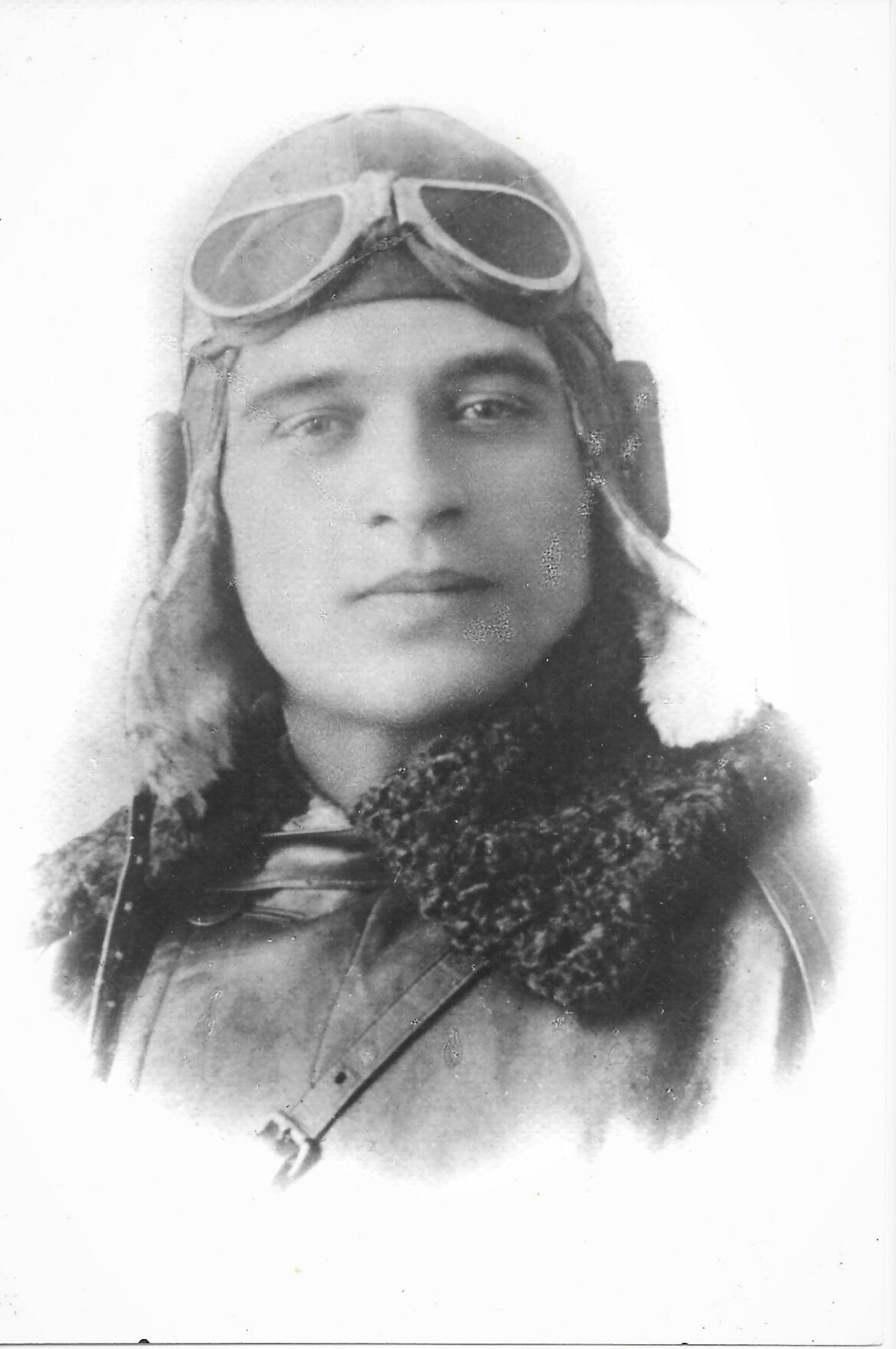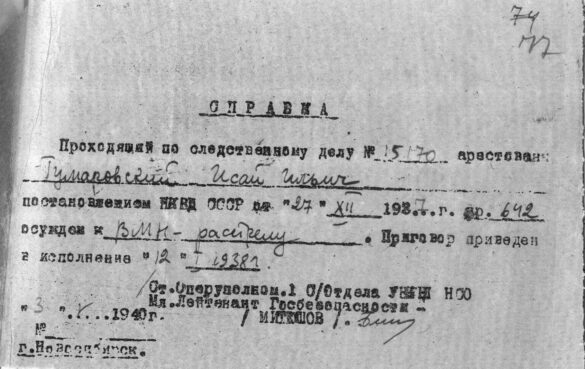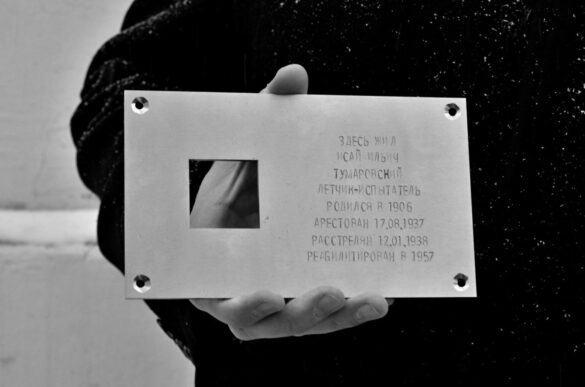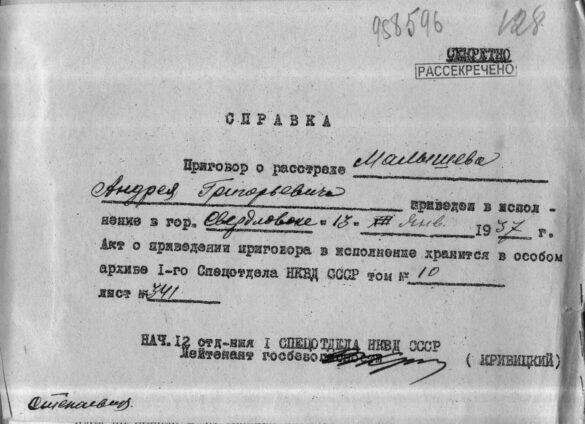Two memorial plaques of the “Last Address” project were installed in Perm.
Usually memorial signs of the “Last Address” project are installed in memory of hitherto unknown people – workers, peasants, and servicemen who died in oblivion during Stalin’s Great Terror. The current plaques, on the other hand, are dedicated to the heroes of the Soviet party and army elite: the test pilot Isay Tumarovsky and the director of Plant No. 98, Andrei Malyshev.
The last address
In Perm Krai, the project was launched in August 2015. Today 52 memorial plaques have been installed. Each one reminds about the workers, peasants and employees who died during the years of terror. This is the point of the action: to perpetuate the memory of exactly those who suffered from political repression, not being a party functionary, a major leader or a military leader.
“Agent of Polish intelligence.”
Such “unreliables” as Isai Ilyich turned out to be several dozen people in the city of Perm. Among them were citizens of different professions and different nationalities. All of them were arrested and condemned as part of the “Polish operation of the NKVD” in 1937-1938 and almost all of them were shot and later rehabilitated. Isaiah Ilyich was a Jew by nationality, which was enough for the NKVD officers to issue a warrant for his arrest and falsify charges of espionage.

Isaiah Ilyich Tumarovsky was born in 1906 in the city of Yekaterinoslav (later Dnepropetrovsk, now Dnepr). In the 1930s he was a test pilot at different enterprises of the country, and in the beginning of 1937 he arrived together with his wife and daughter to Perm and got a job as a test pilot at the plant #19 (now JSC UEC-Perm Motors).
On August 17, 1937 Isaiah Ilyich was arrested by the NKVD. The test pilot was accused of working for Polish intelligence. Allegedly in 1930 he was recruited by the spy Molotkovsky and since then he was a member of the “Polish military organization”. The materials of the criminal case say that in 1930 he “prepared the border crossing from the USSR to Poland with espionage information and was engaged in intelligence activities in favor of Poland.” And in 1936, “on instructions from Molotkovsky through the German spy Veltner, he prepared the establishment of communication with the German consulate in the city of Novosibirsk for espionage purposes.

On December 27, the court found Isai Ilyich guilty of counterrevolutionary crime (Article 58 of the Criminal Code of the RSFSR). Tumarovsky was sentenced to capital punishment. Two weeks later he was shot. In 1957, during the revision of the case, all the charges against him were completely refuted. The Military Collegium of the USSR Supreme Court posthumously rehabilitated Isaiah Ilyich Tumarovsky.
Ilyich Tumarovsky’s last address was a five-story building at 51 Ekaterininskaya Street. The building, built in 1930 by the architect F. E. Morgunov, with the inscription on the facade “House of the City Council,” is a monument of architecture. In the 1930s it was home to representatives of the Soviet party and economic elite. And the other day a plaque bearing the name of Tumarovsky was installed on it. The application for its installation was submitted by the grandson of Isaiah Ilyich, Alexander Korobochkin.

“Participant of the counterrevolutionary Trotskyist terrorist organization.”
Andrei Grigorievich Malyshev’s fate is similar to that of many faithful and loyal Leninist-Bolsheviks who were crushed by the roller of the Great Terror. He was born in 1893 in Bashkiria to a peasant family. He was conscripted in 1914, and went into the trenches of World War I. And after the revolution, he, like many, joined the Red Army and the All-Union Communist Party (b).
His career is rapidly moving upward. In the 1920s he serves as a military commissar in Bashkiria. Then he commands the Urals Territorial District in Sverdlovsk. In 1935, he is appointed head of construction and director of plant No. 98. Together with his wife, daughter and son, he moves to the right bank of the Kama, to Zakamsk.
A few years earlier here began the construction of the chemical plant “K”, which would later be renamed to Plant №98 (now the Perm Powder Plant). Near the plant dwelling for its workers was erected. At first they were barracks, later they were replaced by multi-storey stone houses.

House number 75 on Kirovogradskaya street is located at the corner with Lipatova street. There used to be a private house next to this house. From this house on July 17, 1937 Andrew Grigorievich was taken away by workers of NKVD. He was expelled from the ranks of the CPSU (b) as “enemy of the people” and was accused of the fact that he allegedly from 1934 was a member of “the counterrevolutionary Trotskyist terrorist organization”, was engaged at plant №98 “subversive-sabotage activity and espionage in favor of the Japanese and German intelligence.

On January 13, 1938 the Military Collegium of the Supreme Court of the USSR found him guilty under the same Article 58 of the Criminal Code of the RSFSR. Malyshev was sentenced to capital punishment with confiscation of property and executed on the same day. His wife, Maria Ksenofontovna Malysheva, would also be arrested and sentenced as a “family member of a traitor to the Motherland” (CSIR). She would serve her sentence for nine years.
Only after Stalin’s death in 1956 did the Military Collegium of the Supreme Court of the USSR posthumously rehabilitate Andrei Grigorievich, recognizing that “…the Malyshev charge was based on inconsistent, unconvincing and not credible materials of the preliminary investigation, which were not checked in court contrary to the law.
Yuri Kuroptev 21 December 2021. Source https://zvzda.ru/articles/a2819bc64c74

